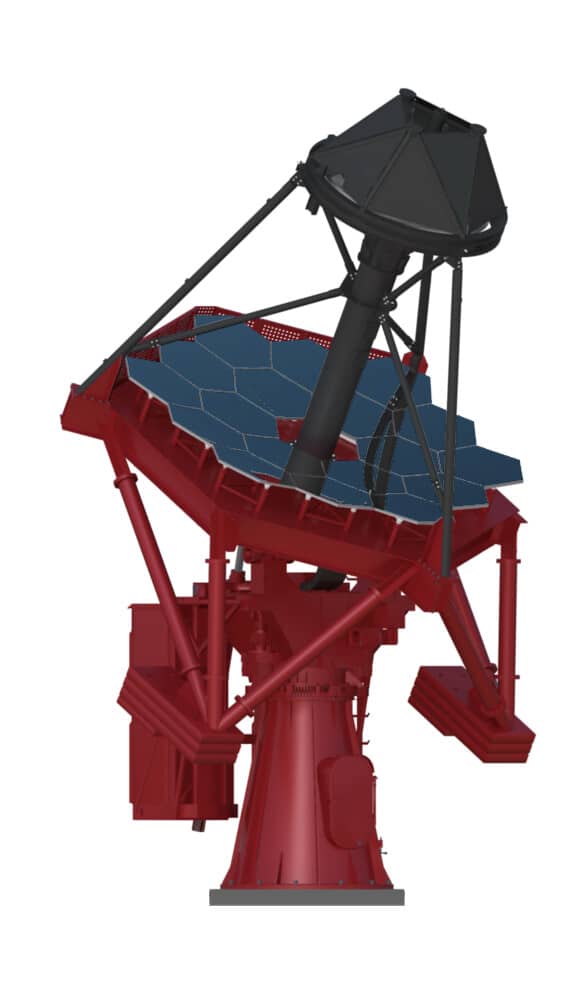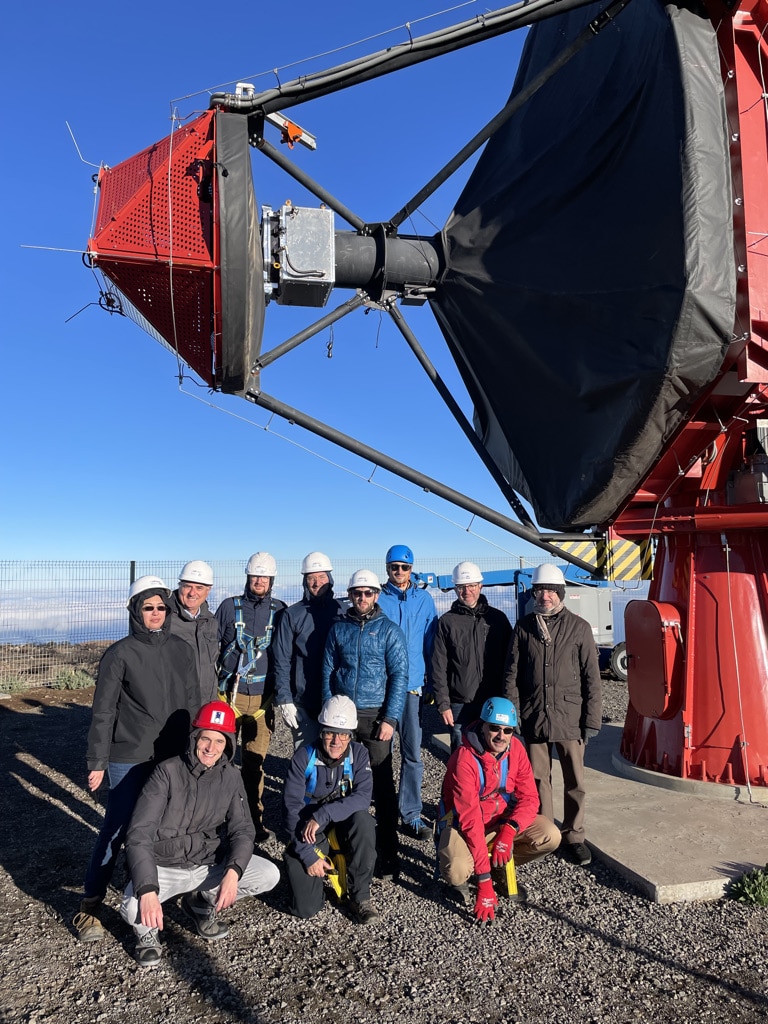Small But Mighty
The very high-energy gamma ray-induced showers that the SSTs are optimized to detect produce a large amount of Cherenkov light but are less frequent than lower–energy showers. Thus, to increase the probability of detection, there will be a higher number of telescopes spread out over several square kilometers on the CTAO-South array site. Compared to the other CTAO telescopes, the SSTs a dual-mirror design and a larger field of view.

The Design
The SST relies on a modified Schwarzschild-Couder dual-mirror optical design, providing a good spatial resolution over a large field of view. They are compact telescopes with small focal ratios allowing the use of compact cameras.
The Reflectors
Unlike the LST and MST designs, the SSTs have two reflectors. Each SST has a 4.3 m2 primary reflector made up of 18 hexagonal segments that reflects the light into a monolithic secondary reflector 1.8 m in diameter that focuses the Cherenkov light into the camera, where the light can be digitised and processed.
The Camera
The SST’s small plate scale permits the use of a novel compact camera based on silicon photomultipliers (SiPMs) sensors. Its 32 SiPM tiles account for a total of 2048 pixels, covering a field of view of approximately 9 degrees. The camera captures Cherenkov light with 128-frame movies, with each frame lasting one billionth of a second.
SST Rendering (Credit: Gabriel Pérez Díaz, IAC)
The SST Prototype
The current SST concept was validated, both for the structure and camera, by developing the prototype dual-mirror ASTRI-Horn Cherenkov telescope and the CHEC-S SiPM camera, respectively. The improved ASTRI-Horn telescope serves as a precursor for the SST’s structure. Further improvements on the ASTRI-Horn telescope structure have been implemented with the development of the ASTRI mini array telescopes. The first of nine telescopes is now mounted in Tenerife. The primary mirror will be further modified for the SST following a different structural optimization that provides an improved mechanical behavior, while the sizes and the interfaces will be kept exactly the same.
The SST Collaboration
The SST is being developed by an international collaboration that includes research institutes and universities from Australia, Brazil, France, Germany, Italy, Japan, Netherlands, Switzerland and UK.
